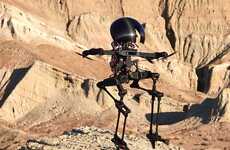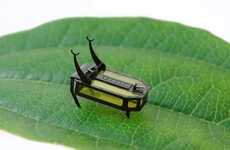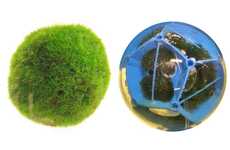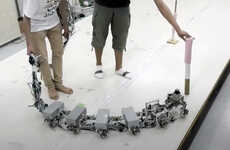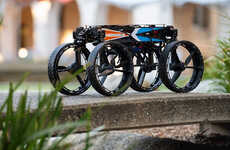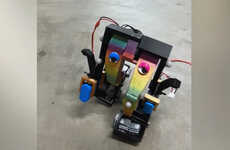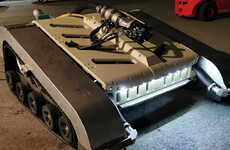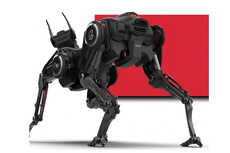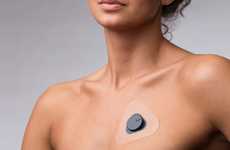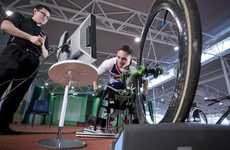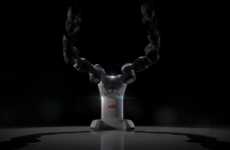
Case Western Reserve University's Bot Uses Muscles from a Sea Slug
References: eurekalert.org & theverge
Researchers from Case Western Reserve University have built a biohybrid robot, or a robot that incorporates biological material in order to function -- similar to cyborgs that populate the pages and screens of science fiction works. The researchers' bot uses muscles from the mouth of a sea slug to provide locomotion, while those muscles are attached to a 3D-printed frame that acts as an exoskeleton. When electric currents are alternately activated and deactivated in the organic muscle tissue, the robots "arms" flex and release in a crawling motion.
To be sure, the movement is very rudimentary. Crawling along the ground, the biohybrid robots move like sea turtles -- albeit at only 0.43 centimeters per minute. The benefit of later versions of these bots, though, is that the energy needed for movement is far lower than with a fully battery-powered equivalent.
Using biohybrid robotic technology, scientists can take robots farther than their predecessors.
To be sure, the movement is very rudimentary. Crawling along the ground, the biohybrid robots move like sea turtles -- albeit at only 0.43 centimeters per minute. The benefit of later versions of these bots, though, is that the energy needed for movement is far lower than with a fully battery-powered equivalent.
Using biohybrid robotic technology, scientists can take robots farther than their predecessors.
Trend Themes
1. Biohybrid Robotic Technology - The development of biohybrid robotic technology creates opportunities for incorporating biological materials into robots, allowing for more efficient and low-energy movement.
2. Muscle-driven Locomotion - The use of muscles from living organisms, such as sea slugs, to enable locomotion in robots presents disruptive innovation opportunities for the robotics industry.
3. Low-energy Robotic Movement - The advancement of biohybrid robots that require less energy for movement opens up possibilities for creating energy-efficient robotic systems.
Industry Implications
1. Robotics - The robotics industry can explore the integration of biological materials in robots, leading to the development of more advanced and efficient robotic systems.
2. Biotechnology - The field of biotechnology can capitalize on the potential of biohybrid robotic technology to create novel applications and solutions for various industries.
3. Medical Devices - The medical devices industry can leverage biohybrid robotic technology to develop innovative prosthesis and assistive devices that mimic natural movement patterns.
4.1
Score
Popularity
Activity
Freshness

